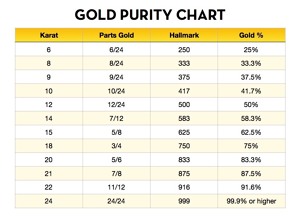Tavex uses cookies to ensure website functionality and improve your user experience. Collecting data from cookies helps us provide the best experience for you, keeps your account secure and allows us to personalise advert content. You can find out more in our cookie policy.
Please select what cookies you allow us to use
Cookies are small files of letters and digits downloaded and saved on your computer or another device (for instance, a mobile phone, a tablet) and saved in your browser while you visit a website. They can be used to track the pages you visit on the website, save the information you enter or remember your preferences such as language settings as long as you’re browsing the website.
| Cookie name | Cookie description | Cookie duration |
|---|---|---|
| tavex_cookie_consent | Stores cookie consent options selected | 60 weeks |
| tavex_customer | Tavex customer ID | 30 days |
| wp-wpml_current_language | Stores selected language | 1 day |
| AWSALB | AWS ALB sticky session cookie | 6 days |
| AWSALBCORS | AWS ALB sticky session cookie | 6 days |
| NO_CACHE | Used to disable page caching | 1 day |
| PHPSESSID | Identifier for PHP session | Session |
| latest_news | Helps to keep notifications relevant by storing the latest news shown | 29 days |
| latest_news_flash | Helps to keep notifications relevant by storing the latest news shown | 29 days |
| tavex_recently_viewed_products | List of recently viewed products | 1 day |
| tavex_compare_amount | Number of items in product comparison view | 1 day |
| Cookie name | Cookie description | Cookie duration |
|---|---|---|
| chart-widget-tab-*-*-* | Remembers last chart options (i.e currency, time period, etc) | 29 days |
| archive_layout | Stores selected product layout on category pages | 1 day |
| Cookie name | Cookie description | Cookie duration |
|---|---|---|
| cartstack.com-* | Used for tracking abandoned shopping carts | 1 year |
| _omappvp | Used by OptinMonster for determining new vs. returning visitors. Expires in 11 years | 11 years |
| _omappvs | Used by OptinMonster for determining when a new visitor becomes a returning visitor | Session |
| om* | Used by OptinMonster to track interactions with campaigns | Persistent |
| Cookie name | Cookie description | Cookie duration |
|---|---|---|
| _ga | Used to distinguish users | 2 years |
| _gid | Used to distinguish users | 24 hours |
| _ga_* | Used to persist session state | 2 years |
| _gac_* | Contains campaign related information | 90 days |
| _gat_gtag_* | Used to throttle request rate | 1 minute |
| _fbc | Facebook advertisement cookie | 2 years |
| _fbp | Facebook cookie for distinguishing unique users | 2 years |
Are Gold Teeth Made of Real Gold

From ancient civilisations utilising them as status symbols to contemporary stars flaunting gold grillz, gold teeth have captivated people for millennia.
Still, the issue of whether gold teeth are composed of actual gold begs questions. We will explore the world of gold teeth in dental care in this post, including the materials utilised, the several types accessible, and their importance.
Materials Used in Gold Teeth
Purity of Gold
Gold used in dental work is not pure. Pure gold (24 karats) is too soft for practical use in the mouth.
Instead, dental gold typically ranges from 10 to 22 karats

Alloy Composition
To enhance the durability and strength of gold teeth, gold (the precious metal) is often mixed with other metals like copper, silver, platinum, or palladium. This mixture is known as an alloy.
Common Metals Mixed with Gold
Copper: Adds strength and durability.
Silver: Improves workability and appearance.
Palladium: Enhances the hardness and durability of the gold alloy.
Solid Gold Teeth
Solid gold teeth are not just for show. They are functional and can replace natural teeth. Because of gold’s biocompatibility, these teeth are well-tolerated by the body, making them a suitable option for long-term use.
Why Use Gold in Dentistry?

1) Durability and Strength
Gold is a durable material that can withstand the forces of chewing and grinding. It’s less likely to crack or chip compared to other materials. Yellow gold is mixed in with other metals to also enhance the strength of the teeth, this is known as alloy mixing.
2) Biocompatibility and Safety
Gold is biocompatible – that is, it does not produce allergic responses or other side effects. This makes it a sensible option for dental restorations.
3) Aesthetic Appeal
Gold teeth offer a unique aesthetic that some people find attractive. They can be a symbol of wealth, status, or personal style.
Read more on the topic here: The industrial use of gold
How to Determine If Gold Teeth Are Real?
To verify if gold teeth are real, various methods can be used:
Weight Test: Gold is denser than many other metals, making it heavier.
Acid Test: A small drop of nitric acid can determine the presence of real gold.
Cultural and Social Impact of Gold Teeth
Different societies have valued gold teeth differently and have included them into their own customs
While in some countries they constitute a fashion statement, others represent riches and power. Gold teeth have also become rather popular thanks in great part to celebrities, especially in music and entertainment.
Conclusion
Ultimately, while not always pure, gold teeth are indeed composed of actual gold. They are found in several forms and frequently alloyed with other metals for durability and strength.
Gold teeth have a special role in dental treatment and cultural expression whether they are worn as a fashion statement or for pragmatic needs.


















